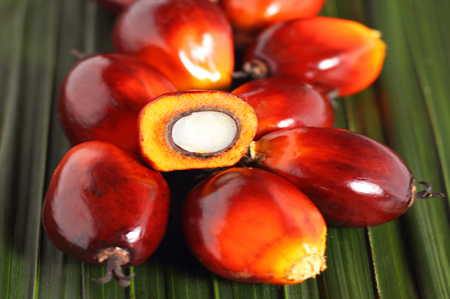Palm Slumps to Five-Year Low as Bear Market Deepens on Supplies
Category: Oilseeds
 (Bloomberg) – Palm oil tumbled to the lowest level since 2009 on concern that record global reserves of soybeans used to produce an alternative oil may curb demand for the commodity used in everything from food to biofuels.
(Bloomberg) – Palm oil tumbled to the lowest level since 2009 on concern that record global reserves of soybeans used to produce an alternative oil may curb demand for the commodity used in everything from food to biofuels.
Futures dropped as much as 2.8 percent to 2,115 ringgit ($666) a metric ton on the Bursa Malaysia Derivatives, the lowest level since October 2009, before closing at 2,133 ringgit. Prices are down 20 percent this year, heading for the third annual decline in four years.
Palm, the world’s most used cooking oil, entered a bear market last month as favorable weather in the U.S. boosted the outlook for soybean crops estimated to be the largest on record. Soybeans, corn and wheat are trading near their lowest levels since at least 2010, cutting world food costs measured by the United Nations to a six-month low in July.
“The discount of palm to soybean oil is still very narrow and that will add more pressure on palm,” said Hiro Chai, associate director at CIMB Futures Sdn. in Kuala Lumpur. “As palm production continues to rise until September, we’ll have further pressure” on prices, he said.
Soybean oil declined as much as 2 percent to 33.62 cents a pound on the Chicago Board of Trade, the lowest level since September 2009. Soybeans slumped to $10.3875 a bushel, the lowest since September 2010.
The spread between palm and soybean oil needs to widen to between $120 and $130 a ton for palm to be attractive to users again, Chai said. Palm’s discount to soybean oil shrunk to about $71 a ton today from an average of $244 in 2013, data compiled by Bloomberg show.
Soybean Inventories
U.S. farmers will harvest a record 3.816 billion bushels this year, compared with 3.8 billion (103.4 million tons) estimated in July, the U.S. Department of Agriculture said on Aug. 12. World inventories before the start of the 2015 Northern Hemisphere harvests will rise 28 percent to a record 85.62 million tons, the agency estimates.
Palm oil stockpiles in Malaysia, the biggest producer after Indonesia, increased last month from the lowest level since June 2013 as production rose more than expected. While stockpiles at 1.68 million tons were lower than the record of 2.63 million tons in December 2012, expectations of rising output adding to reserves may pressure prices, Chai said. Output is typically highest from July to October each year.
Production in Malaysia may reach a record 19.7 million tons to 19.9 million tons, while Indonesia’s output may total an all-time high of 30.5 million tons or more this year, according to Dorab Mistry, director at Godrej International Ltd. The two Southeast Asian producers together account for 86 percent of world supplies.
Refined palm oil for January delivery fell 2.2 percent to close at 5,440 yuan ($884) a ton on the Dalian Commodity Exchange, the lowest since September 2013. Soybean oil slumped 3.2 percent to end at 6,112 yuan, the lowest since March 2009.




